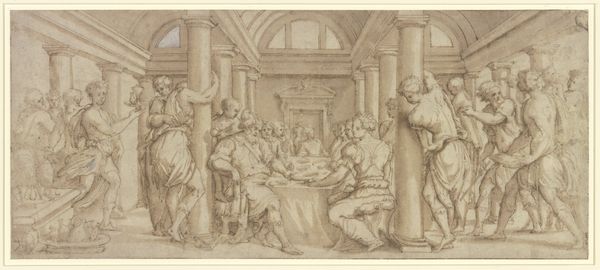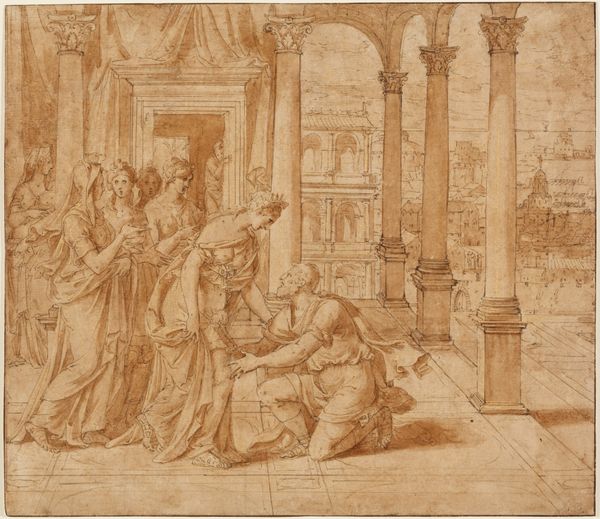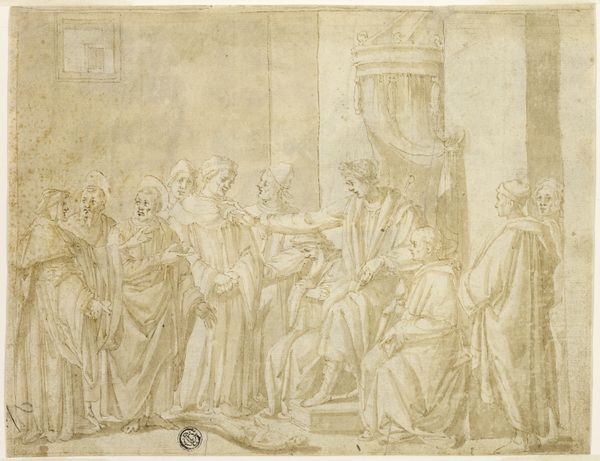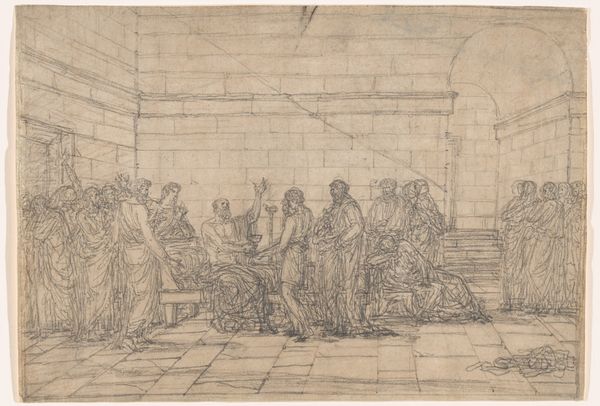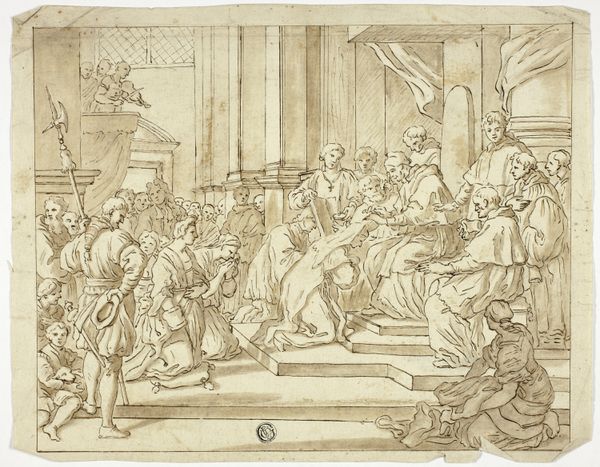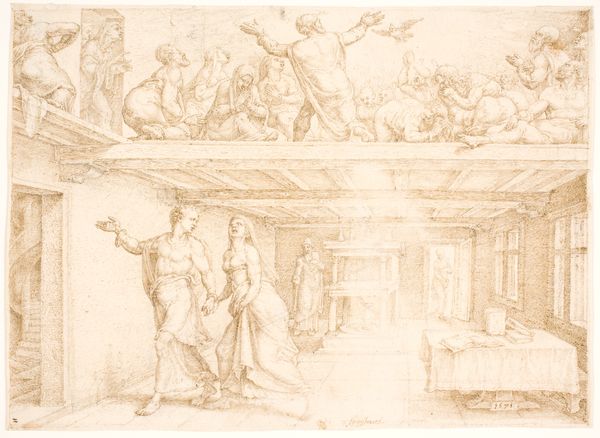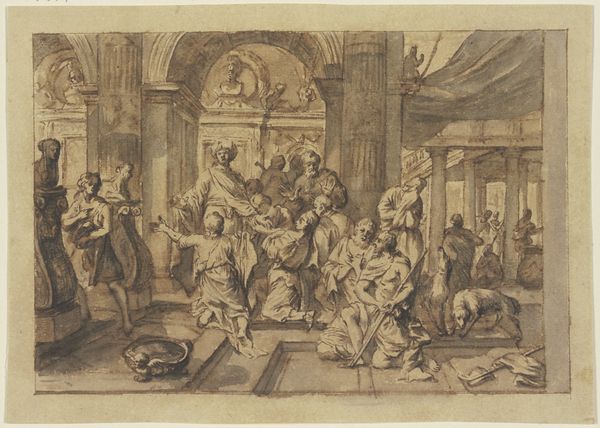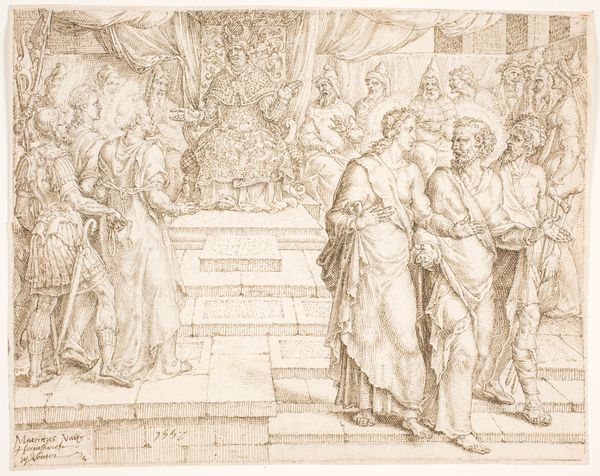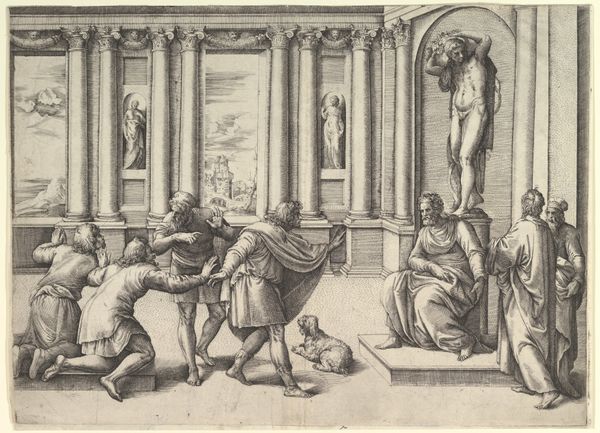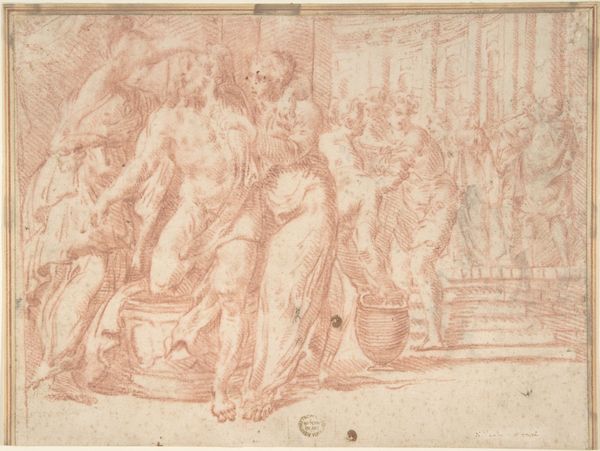
Christ in the House of Simon the Pharisee after 1540
0:00
0:00
drawing, print, etching, paper, ink, pencil, pen
#
drawing
#
narrative-art
# print
#
etching
#
pencil sketch
#
etching
#
paper
#
11_renaissance
#
ink
#
ink drawing experimentation
#
geometric
#
pencil
#
pen
#
history-painting
Dimensions: 280 × 420 mm
Copyright: Public Domain
Curator: So, this is Domenico Campagnola's "Christ in the House of Simon the Pharisee," an etching made sometime after 1540. You know, at first glance, it looks like your standard Renaissance dinner scene, but then your eye catches the woman kneeling at Christ’s feet. Editor: Yeah, I was struck by that too. There’s definitely a story being told, but the etching itself, with the warm ink tones and almost architectural precision, makes it feel more like a stage set than a spontaneous moment. What do you see in it? Curator: Oh, stage set is a brilliant way to put it. It's like Campagnola’s inviting us to witness a pivotal scene, one dripping with layers. That kneeling woman, generally believed to be Mary Magdalene, is washing Christ’s feet with her tears and drying them with her hair! Can you imagine the scene?! A powerful display of repentance and devotion in a pretty male-dominated society. How does that resonate with you? Editor: I can definitely see that tension now. Like she’s breaking some unspoken rule. I guess I was just initially caught up in the classical setting and the way everything's rendered so neatly. Curator: Absolutely! It's Renaissance theatre! And those sharp lines and calculated perspectives highlight, rather than hide, the radical nature of her act. See how Campagnola uses geometry itself to frame that emotional break from society. You see something new each time you truly *look* at art. Editor: That’s true! I hadn't really thought about it like that, the setting actually accentuating the disruption. Curator: Precisely! It's a delicate balance between form and emotion, isn’t it? I find myself drawn to how Campagnola captured it. Something new, like a quiet epiphany with every gaze. Editor: Yeah, totally. I was too quick to judge it as just a "dinner scene," now I can see this interplay, all the layers. Thanks for showing me that!
Comments
No comments
Be the first to comment and join the conversation on the ultimate creative platform.
